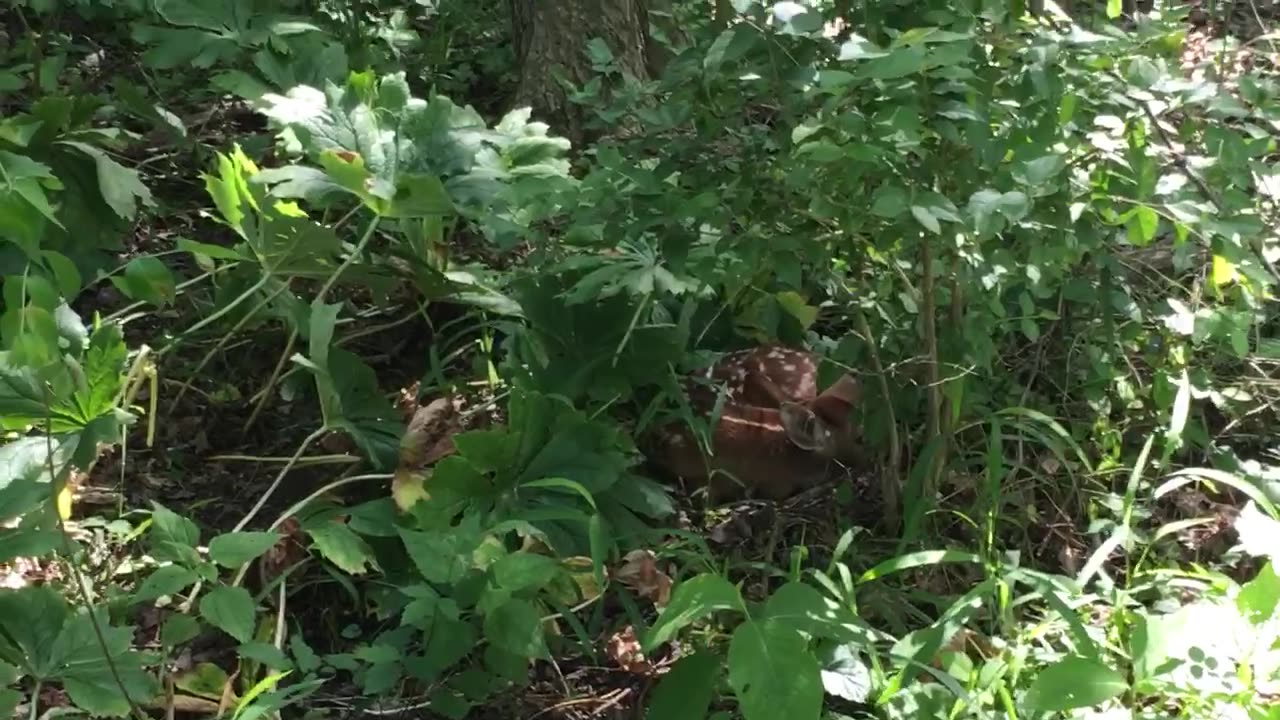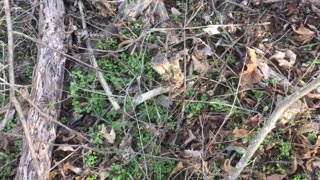Premium Only Content

Northern Kentucky Project: Fawning Over Wildlife
As I was working on bush honeysuckle removal, I almost dropped the Pullerbear Pro right on top of this fawn, it was that well blending in to the vegetation. Thankfully, at the last second, I noticed the spots and the coppery brown color and pulled the bar up before it made contact.
Things to remember about wild deer babies (fawns). They are typically born late April - early June depending on where in the country they are and the typical climate for the region. Here in Northern KY, I would guess it is most concentrated around mid-May to early June.
A few years ago, I worked on a white-tail deer / coyote research study as a wildlife technician for Clemon University. We attached GPS collars to the mothers, the fawn, and coyote, and studied the usual distance a mother would travel from her fawn, and also how often coyote would pass by fawn without detecting it. Fawn are born without any scent, so predators cannot smell them while they are that young. Mother deer (doe) typically leave them for hours at a time and in our study (I believe one was found to travel over a mile from her fawn), only coming to feed them a few times a day. This is for the baby’s safety because when the mother comes to nurse, the fawns location is exposed, and the mother risks getting her own scent on the fawn which would cause them to become more easily detectable by predators.
If you come across a fawn, leave it be. Unless you see the mother getting hit by a car, or the baby just walking around dehydrated bleating, the mother has likely not abandoned it. The longer you linger in the area the harder it will be for the mother to come back to feed the baby fawn causing the fawn to become distressed.
Hope this helps you in your own adventures in the forests.
Until next time.
-
 2:49
2:49
Moon-Struck Land Management
1 month agoThe Green Winter Flush
364 -
 1:32:34
1:32:34
Glenn Greenwald
10 hours agoThe Future of Gaza With Abubaker Abed; Journalist Sam Husseini On His Physical Expulsion From Blinken’s Briefing & Biden’s Gaza Legacy | System Update #391
108K80 -
 1:34:48
1:34:48
Roseanne Barr
13 hours ago $21.14 earnedWe are so F*cking Punk Rock! with Drea de Matteo | The Roseanne Barr Podcast #83
84.7K56 -
 1:08:20
1:08:20
Man in America
14 hours ago🇨🇳 RedNote: A CCP Trojan Horse Deceiving Americans? w/ Levi Browde
41.4K38 -
 3:55:11
3:55:11
I_Came_With_Fire_Podcast
17 hours agoTrump SABOTAGE, LA FIRE CHIEF SUED, and BIDEN’S LAST F-U!
27.1K8 -
 2:59:47
2:59:47
Joker Effect
8 hours agoUkraine in a video game? Hardest thing I have done. S.T.A.L.K.E.R.2 Heart of Chornobyl,
97.1K5 -
 1:15:22
1:15:22
Flyover Conservatives
1 day agoEczema, Brain Fog, B.O., and Gas… Eating Steak and Butter Creates Ultimate Health Hack - Bella, Steak and Butter Gal | FOC Show
72.3K5 -
 51:58
51:58
PMG
12 hours ago $2.92 earned"Can the Government Learn from Elon Musk’s 70% Labor Cut? A Deep Dive into Inefficient Agencies"
51.4K1 -
 6:39:15
6:39:15
Amish Zaku
12 hours agoRumble Spartans #10 - New Year New Maps
44.1K3 -
 1:04:58
1:04:58
In The Litter Box w/ Jewels & Catturd
1 day agoNo Tax On Tips! | In the Litter Box w/ Jewels & Catturd – Ep. 722 – 1/17/2025
160K32